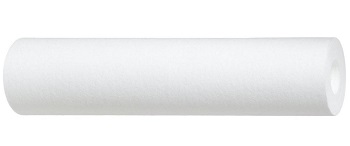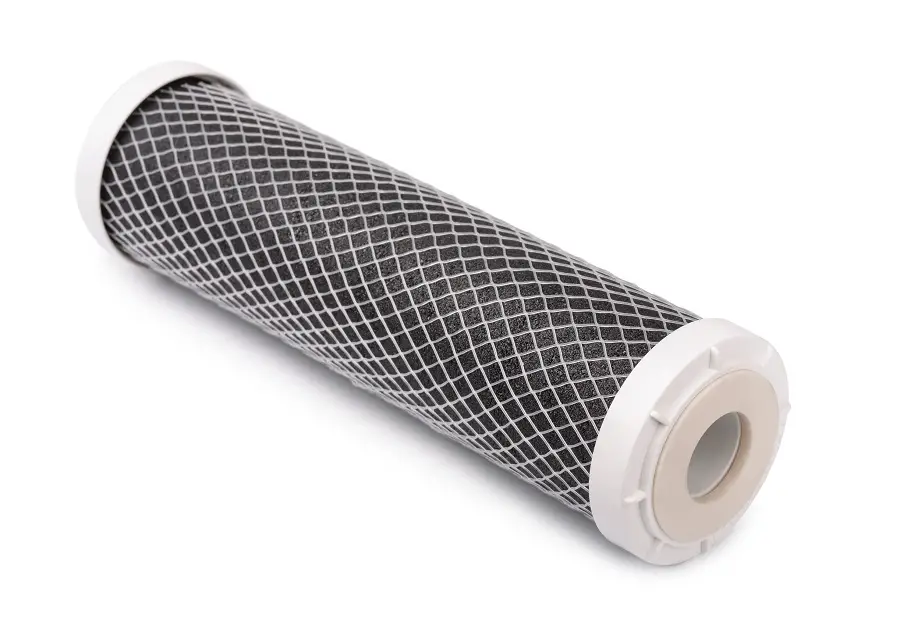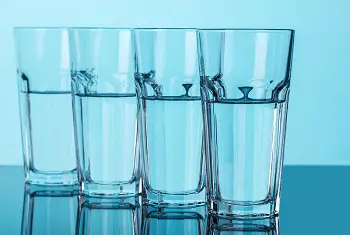Although the process of reverse osmosis is the primary filtering objective of a reverse osmosis drinking water system, it can accomplish other water filtering using different filters (stages) in the production of better drinking water for you and your family. You may see systems boasting 9, 11, or even more stages, but I have found the 3, 5, 6, or 7 stage systems to be ideal for most water situations.
What are the stages of reverse osmosis? The basic stages of a reverse osmosis system are sediment pre-filtering, a carbon filter for chlorine removal, removal of dissolved solids through a reverse osmosis membrane, and polish filtering using an activated carbon filter.
Why are there multiple stages to a reverse osmosis drinking water system?
Because there can be many different contaminants in water, there is not just one simple filter that will remove them all.
Multiple stages of a reverse osmosis system refer to the multiple filters or other water treatment processes being done by the system. It all depends on what is in your water that you wish to have removed.
The primary reason that most people install a reverse osmosis drinking water is to remove excessive dissolved solids in their water, usually salt.
The reverse osmosis membrane in the system works very well at removing these dissolved solids but it is very fragile. Because of this, we need to have a sediment filter (stage) to protect it from dirt and debris which could tear or pierce the membrane.
Chlorine and other chemicals can harm the reverse osmosis membrane as well. So to protect it from these substances, we need to have a carbon-based filter to remove them (another stage).
The number of additional stages required to filter out any other contaminants, or to filter the water to a certain degree of purity, will depend on the characteristics of the water.
Some stages of a reverse osmosis drinking water system are not actually filtering at all. A stage is basically just a point where the water is being processed in some way.
Not all reverse osmosis drinking water systems will have these stages in the same order. Many reverse osmosis system manufacturers will add additional stages before or after the reverse osmosis membrane for different purposes.
The number of stages on a reverse osmosis drinking water system can vary quite a bit. You should determine which apply to your particular water situation, and choose a highly rated system that works best for you.
Stages of water treatment on a 3 stage reverse osmosis drinking water system:
1: Sediment pre-filtering using a fine particle filter:

Water coming into your home can have small particles of sediment and other debris in it. Even if you have a whole house filter and a water softener, some of this debris can get into the home and into your reverse osmosis drinking water system.
If this sediment were to get into your reverse osmosis system, it could quickly clog up your reverse osmosis membrane and potentially cause blockage internally. For this reason, a sediment pre-filter is the reverse osmosis system’s first stage.
Just having a water softener does not ensure that your water is free of sediment.
A water softener is not a filter!
As water goes through a water softeners tank, hardness is removed through the process of ion exchange. This is not a filtering process, but a water conditioning process. So if sediment is in your water supply, it must be removed by a separate sediment filter.
2: Removal of dissolved solids using a reverse osmosis membrane:

The process of reverse osmosis in a drinking water system is the forcing of the water through a semi-permeable membrane which allows water molecules to go through the membrane while rejecting unwanted contaminants in the water.
This process is used to remove salts and other dissolved solids in the water. While reverse osmosis does a great job at removing all of these things from our water, it doesn’t remove everything, and will generally not remove 100% of all of these contaminants.
But, a properly working reverse osmosis drinking water system will remove about 98% of salts and other contaminants that are commonly found in our water supplies.
3: Chemical and extra-fine particle filtering with an activated carbon filter:

The activated carbon filter in a reverse osmosis system is used to remove fine particles and chemicals in the water.
Pesticides, herbicides, Volatile Organic Compounds (VOCs), and other organic materials can be removed from the water when passed through an activated carbon filter.
An activated carbon filter is also used to remove contaminants that can cause the water to taste odd or have odors.
Why are there 3 stages on a reverse osmosis system?
On a basic standard reverse osmosis drinking water system, there will be 3 stages of filtering because of the size on the contaminant being filtered or by the type of filtering be done.
The sediment pre-filter is primarily for filtering out of small particles like dirt, sand, rust, or other debris that may be brought in from your source of water.
The reverse osmosis membrane is the main reason that most people like having a reverse osmosis drinking water system because it will remove nearly if not all of the sodium (salt) and other dissolved solids that are in your water.
Finally, an activated carbon filter will remove very fine particles that can cause odors in the water and odd tastes.
It will also remove chemicals that have gotten through the rest of the system, leaving the water with a clean crisp taste. This is why the activated carbon filter is also commonly referred to as a polishing filter.
Stages of water treatment on a 5 stage reverse osmosis drinking water system:
In addition to the 3 stages of a standard reverse osmosis drinking water system, many reverse osmosis systems will have 2 additional carbon filters.
These additional carbon filters are ideal for municipal water supplies that contain chlorine or other additives that have been introduced into your water.
These carbon filters are usually right after the sediment pre-filter and are there to remove chlorine which can damage your reverse osmosis membrane.
The second carbon filter is a Granular Activated Carbon (GAC) filter. This filter will catch large amounts of chemicals and organic material, which can create odors or discoloration in the water.
Why is a 5 stage reverse osmosis system beneficial?
Municipal water companies will treat your water long before it gets to your home. They will often use strong doses of chlorine to disinfect the water in order to make it safe to drink.
If this chlorine is not removed from the water before getting to your reverse osmosis membrane, it will chemically damage the membrane, creating holes in which untreated water can get past the membrane.
Carbon filtering of the water will remove chlorine and other chemicals that can be harmful to you and your reverse osmosis membrane.
Stages of water treatment on a 6 stage reverse osmosis drinking water system:
Because the process of reverse osmosis removes dissolved solids and minerals in your water, it also removes the minerals that help to neutralize the acid in the water. Without these minerals in the water, reverse osmosis water becomes acidic.
Although the level of acidity in the water is not considered to be harmful, many people prefer to drink water that is non-acidic, or “Alkaline”.
The sixth stage on a reverse osmosis drinking water system is most commonly an “Alkaline Remineralization” cartridge.
This cartridge is normally filled with calcite which is a mineral that works very well at neutralizing the acid in water. Since the calcite gets dissolved away as it neutralizes your water, this cartridge should be changed when you do your regularly scheduled filter change.
What is the benefit of a 6 stage Alkaline Remineralization reverse osmosis system?
There is much debate about the potential health benefits of alkaline water. If you feel that having your reverse osmosis water treated to make it more alkaline, then you should consider this extra stage when choosing a reverse osmosis system.
Stages of water treatment on a 7 stage reverse osmosis drinking water system:
A final touch to help purify your drinking water would be to have a UV purifier as part of your reverse osmosis drinking water system. An ultraviolet purifier is designed to purify your water from any organic material in it.
By adding a UV purifier, to your reverse osmosis system you will not only be making the water healthier by removing inorganic dissolved solids in the water but organic material as well.
Why would you need a 7 stage reverse osmosis system?
If you have a private well and are concerned about bacteria or other organic contaminants in your water, using an ultraviolet water purifier will make your water healthier for you and your family.
Other stages found on larger reverse osmosis systems:
Some of the more elaborate reverse osmosis drinking water systems may offer additional filter cartridge options that claim to add antioxidants to the water. Some will even offer an oxygenation stage that is supposed to add more oxygen to the water.
I have not found too many of these systems, but they are available if you think that they would be beneficial to you and your family.
I’m sure that with each passing health craze there will be more and more stages that manufacturers will be adding to their reverse osmosis drinking water systems.
Some may actually be very beneficial, but the 7 stages that have been discussed in this article are all important to providing you with quality drinking water. Decide which are important to you and enjoy your new reverse osmosis drinking water system.
Can you have too many stages on a reverse osmosis system?
To answer this, you have to understand that with each additional stage that is added to a reverse osmosis drinking water system can affect the pressure of the water going through it.
The process of reverse osmosis relies on the water being forced through the reverse osmosis membrane.
If the water pressure in the home is only mediocre, to begin with, the water may not be forced through the membrane properly and therefore the quality of the water may not be as good as it should be.
Is a 100 gallon per day system better than a 50?
Actually, the more volume of water being processed by an average reverse osmosis membrane usually results in lesser quality water.
Remember that a reverse osmosis drinking water system will top off its storage tank way before the tank becomes empty. And the system does not make filtered water at all times.

A 50 GPD (gallons per day) reverse osmosis system will make more than enough drinking water for an average family, and if you find that you eventually need more water storage, adding an additional storage tank is very easy to do.
How many RO stages do I need for municipal water?
If your water comes from a municipal water supply, it has already been treated to make sure that it is safe to drink. This does not, however, mean that it is good to drink.
They still may be a high level of sodium in the water and there is likely to be chlorine in the water.
I highly recommend getting a 5 stage reverse osmosis drinking water system for municipal water as it will have a carbon filter to remove the chlorine as well as a reverse osmosis membrane to remove the sodium.
So, how many stages are right for you?
For nearly any household, I recommend getting a 6 stage reverse osmosis drinking water system.
A 6 stage system will consist of a sediment pre-filter and a Granulated Activated Carbon (GAC) filter, and a carbon block filter before the reverse osmosis membrane which is important for protecting the membrane of the system.
It will then have the reverse osmosis membrane to remove the dissolved solids in the water which is the main goal in getting a reverse osmosis system for most people.

Next, it will have a second Granulated Activated Carbon polishing filter to ensure that the water is as pure as it can be, along with a mineralization cartridge to neutralize acidic water.
These 6 stages should be a great fit for your water filtration needs, and the price range for a 6 stage reverse osmosis system is still very reasonable.
If you are going to do any work on your reverse osmosis drinking water system, check out my article on What I Use When I Work On A Reverse Osmosis System!


Thank you so much for this great article. Can we assemble ourselves a complete RO system by buying the after market parts ?
Hello Chuba and thank you for the question.
You could assemble a reverse osmosis system with aftermarket parts yourself but I am quite sure that it would end up costing you more than buying a new system after shipping and mark-up on each part.
Hope this helps.
Paul